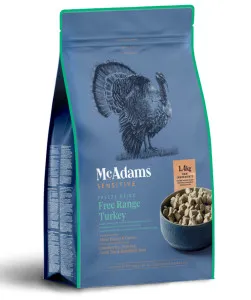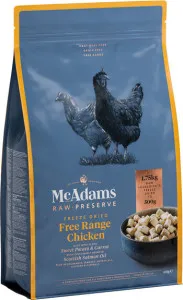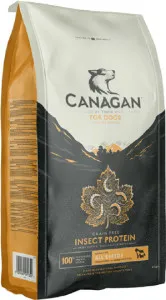How Much Should You Feed Your Dog? 2025 Feeding Guidelines
Feeding your dog the right amount of food is one of the most important aspects of pet care. Too little, and your pup may suffer from malnutrition. Too much, and obesity-related health issues can arise. With evolving research in canine nutrition, the 2025 guidelines provide updated insights to help you make the best choices for your furry friend. Let’s break down everything you need to know about portion control, feeding schedules, and dietary adjustments.
Why Proper Portion Control Matters
Just like humans, dogs need balanced nutrition to thrive. Overfeeding or underfeeding can lead to serious health complications, including:
- Obesity: Excess weight strains joints, increases diabetes risk, and shortens lifespan.
- Malnutrition: Too little food deprives dogs of essential vitamins and minerals.
- Digestive Issues: Inconsistent portions can cause bloating, diarrhea, or constipation.
- Age: Puppies need more calories for growth, while seniors require fewer.
- Weight: Larger breeds need more food, but portion control is key to preventing obesity.
- Activity Level: Active dogs burn more calories and may need extra food.
- Breed: Some breeds have faster metabolisms or genetic predispositions to weight gain.
- Health Conditions: Dogs with diabetes, allergies, or kidney issues may need specialized diets.
- Small dogs (5-15 lbs): ½ to 1 cup per day, split into two meals.
- Medium dogs (16-40 lbs): 1 to 2.5 cups per day, divided into two servings.
- Large dogs (41-70 lbs): 2.5 to 4 cups daily, spread across two meals.
- Giant breeds (70+ lbs): 4 to 6 cups per day, divided into two or three feedings.
- Puppies (under 6 months): 3-4 small meals per day to support rapid growth.
- Adolescents (6-12 months): Transition to 2-3 meals daily.
- Adult dogs (1+ years): 2 meals per day to maintain energy and digestion.
- Seniors (7+ years): 1-2 meals, adjusted for lower activity levels.
- Healthy weight: You can feel (but not see) their ribs without excess fat.
- Consistent energy: No lethargy or hyperactivity after meals.
- Shiny coat: A well-nourished dog has glossy, smooth fur.
- Regular bowel movements: Firm stools with no diarrhea or straining.
- Free-feeding: Leaving food out all day can lead to overeating.
- Ignoring treats: Treats should make up no more than 10% of daily calories.
- Overlooking hydration: Always provide fresh water alongside meals.
- Switching foods abruptly: Transition new food gradually to avoid stomach upset.
- Grain-free vs. grain-inclusive: Unless your dog has allergies, grains can be part of a balanced diet.
- High-protein diets: Beneficial for active dogs but may strain kidneys in older pets.
- Probiotics and prebiotics: Support gut health, especially for dogs with sensitive stomachs.
Using a Pet Food Analyzer can help you determine the right balance of nutrients for your dog’s specific needs.
Factors That Influence How Much to Feed Your Dog
Every dog is unique, and their dietary needs depend on several factors:
2025 Dog Feeding Guidelines by Weight
While exact portions vary by brand and formula, here’s a general guideline based on weight:
Always check the feeding instructions on your dog food packaging and adjust based on your pet’s energy levels.
How Often Should You Feed Your Dog?
Puppies and adult dogs have different feeding schedules:
Recommended Products

McAdams Freeze Dried Free Range Turkey is an excellent choice for how much should you feed your dog? 2025 feeding guidelines. This dog food contains Boneless Free Range Turkey 86.5% and other high-quality ingredients that promote overall health.

McAdams Freeze Dried Free Range Chicken is an excellent choice for how much should you feed your dog? 2025 feeding guidelines. This dog food contains Boneless Free Range Chicken 86% and other high-quality ingredients that promote overall health.

Canagan Insect is an excellent choice for how much should you feed your dog? 2025 feeding guidelines. This dog food contains Freshly Prepared Insects (27%)* and other high-quality ingredients that promote overall health.
Signs You’re Feeding Your Dog the Right Amount
How can you tell if your dog’s diet is on track? Look for these positive indicators:
If you’re unsure, consult your vet or use our Pet Food Analyzer for personalized recommendations.
Common Feeding Mistakes to Avoid
Even experienced dog owners can slip up. Here are the top mistakes to watch for:
Special Dietary Considerations for 2025
New research highlights emerging trends in canine nutrition:
Stay informed by checking updated guidelines and consulting your vet before making major dietary changes.
Final Thoughts: Tailoring Your Dog’s Diet for Optimal Health
Feeding your dog isn’t a one-size-fits-all process. By considering their age, weight, and lifestyle, you can create a meal plan that keeps them happy and healthy. Regularly monitor their weight and adjust portions as needed. For a deeper dive into canine nutrition, explore our Pet Food Analyzer to find the perfect balance for your pup.
Remember, a well-fed dog is a thriving companion—so take the time to get their diet right!
